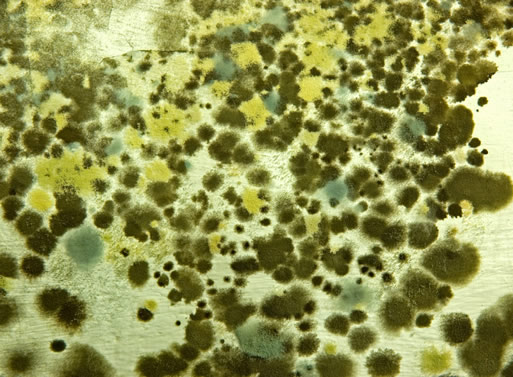 |
| Mining |
Modern mining is an industry that involves the exploration for and removal of minerals from the earth, economically and with minimum damage to the environment. Mining is important because minerals are major sources of
energy as well as materials such as fertilizers and steel.
Mining is necessary for nations to have adequate and dependable supplies of minerals and materials to meet their economic and defense needs at acceptable environmental, energy, and economic costs. Some of the nonfuel minerals mined, such as stone, which is a nonmetallic or industrial mineral, can be used directly from the earth. Metallic minerals, which are also nonfuel minerals, conversely, are usually combined in nature with other materials as ores.
These ores must be treated, generally with chemicals or heat to produce the metal of interest. Most bauxite ore, for example, is converted to
aluminum oxide, which is used to make aluminum metal via heat and additives. Fuel minerals, such as coal and uranium, must also be processed using chemicals and other treatments to produce the quality of fuel desired.
There are significant differences in the mining techniques and environmental effects of mining metallic, industrial, and fuel minerals. The discussion here will mostly concentrate on metallic minerals. Mining is a global industry, and not every
country has high-grade, large, exceptionally profitable mineral deposits, and the
transportation infrastructure to get the mined products to market economically.
Some of the factors affecting global mining are environmental regulations, fuel costs, labor costs, access to land believed to contain valuable ore, diminishing ore grades requiring the mining of more raw materials to obtain the target mineral, technology, the length of
time to obtain a permit to mine, and proximity to markets, among others. The U.S. mining industry is facing increasing challenges to compete with nations that have lower labor costs—for example, less stringent environmental regulations and lower fuel costs.
Mining Life Cycle
Minerals are a nonrenewable resource, and because of this, the life of mines is finite, and mining represents a temporary use of the land. The mining life cycle during this temporary use of the land can be divided into the following stages: exploration, development, extraction and processing, and mine closure.
 |
| Mining Life Cycle |
Exploration is the work involved in determining the location, size, shape, position, and value of an ore body using prospecting methods, geologic mapping and field investigations, remote sensing (aerial and satellite-borne sensor systems that detect ore-bearing rocks), drilling, and other methods. Building access roads to a drilling site is one example of an exploration activity that can cause
environmental damage.
The development of a mine consists of several principal activities: conducting a feasibility study, including a financial analysis to decide whether to abandon or develop the property; designing the mine; acquiring mining rights; filing an Environmental Impact Statement (EIS); and preparing the site for production. Preparation could cause environmental damage by excavation of the deposit to remove overburden (surface material above the ore deposit that is devoid of ore minerals) prior to mining.
Extraction is the removal of ore from the ground on a large scale by one or more of three principal methods: surface mining, underground mining, and in situ mining (extraction of ore from a deposit using chemical solutions). After the ore is removed from the ground, it is crushed so that the valuable mineral in the ore can be separated from the waste material and concentrated by flotation (a process that separates finely ground minerals from one another by causing some to float in a froth and others to sink), gravity, magnetism, or other methods, usually at the mine site, to prepare it for further stages of processing.
 |
| Extraction |
The production of large amounts of waste material (often very acidic) and particulate emission have led to major environmental and health concerns with ore extraction and concentration. Additional processing separates the desired metal from the mineral concentrate.
The closure of a mine refers to cessation of mining at that site. It involves completing a reclamation plan and ensures the safety of areas affected by the operation, for instance, by sealing the entrance to an abandoned mine.
Planning for closure is often required to be ongoing throughout the life cycle of the mine and not left to be addressed at the end of operations. The Surface Mining and Control Act of 1977 states that reclamation must “restore the land affected to a condition capable of supporting the uses which it was capable of supporting prior to any mining, or higher or better uses.”
Abandoned mines can cause a variety of health-related hazards and threats to the environment, such as the accumulation of hazardous and explosive gases when air no longer circulates in deserted mines and the use of these mines for residential or industrial dumping, posing a danger from unsanitary conditions. Many closed or abandoned mines have been identified by federal and state governments and are being reclaimed by both industry and government.
Environmental Impacts
The environmental responsibility of mining operations is protection of the air, land, and water. Mineral resources were developed in the United States for nearly two centuries with few environmental controls. This is largely attributed to the fact that environmental impact was not understood or appreciated as it is today. In addition, the technology available during this period was not always able to prevent or control environmental damage.
Air
All methods of mining affect air quality. Particulate matter is released in surface mining when overburden is stripped from the site and stored or returned to the pit. When the soil is removed, vegetation is also removed, exposing the soil to the weather, causing particulates to become airborne through wind erosion and road traffic. Particulate matter can be composed of such noxious materials as arsenic, cadmium, and lead. In general, particulates affect human health adversely by contributing to illnesses relating to the
respiratory tract, such as emphysema, but they also can be ingested or absorbed into the skin.
Land
Mining can cause physical disturbances to the landscape, creating eyesores such as waste-rock piles and open pits. Such disturbances may contribute to the decline of wildlife and plant species in an area.
 |
| Open pit |
In addition, it is possible that many of the premining surface features cannot be replaced after mining ceases. Mine subsidence (ground movements of the earth’s surface due to the collapse of overlying strata into voids created by underground mining) can cause damage to buildings and roads.
Between 1980 and 1985, nearly five hundred subsidence collapse features attributed to abandoned underground metal mines were identified in the vicinity of Galena, Kansas, where the mining of lead ores took place from 1850 to 1970. The entire area was reclaimed in 1994 and 1995.
Water
Water-pollution problems caused by mining include acid mine drainage, metal contamination, and increased sediment levels in streams. Sources can include active or abandoned surface and underground mines, processing plants, waste-disposal areas, haulage roads, or tailings ponds. Sediments, typically from increased soil erosion, cause siltation or the smothering of streambeds. This siltation affects fisheries, swimming, domestic water supply, irrigation, and other uses of streams.
Acid mine drainage (AMD) is a potentially severe
pollution hazard that can contaminate surrounding soil, groundwater, and surface water. The formation of acid mine drainage is a function of the geology, hydrology, and mining technology employed at a mine site. The primary sources for acid generation are sulfide minerals, such as pyrite (iron sulfide), which decompose in air and water. Many of these sulfide minerals originate from waste rock removed from the mine or from tailings.
 |
| Acid Mine Drainage |
If water infiltrates pyrite-laden rock in the presence of air, it can become acidified, often at a pH level of two or three. This increased acidity in the water can destroy living organisms, and corrode culverts, piers, boat hulls, pumps, and other metal equipment in contact with the acid waters and render the water unacceptable for drinking or recreational use. A summary chemical reaction that represents the chemistry of pyrite weathering to form AMD is as follows:
Pyrite + Oxygen + Water → “Yellowboy” + Sulfuric Acid
“Yellowboy” is the name for iron and aluminum compounds that stain streambeds. AMD can enter the environment in a number of ways, such as free-draining piles of waste rock that are exposed to intense rainstorms, transporting large amounts of acid into nearby rivers; groundwaters that enter underground workings which become acidic and exit via surface openings or are pumped to the surface; and acidic tailings containment ponds that may leach into surrounding land.

































